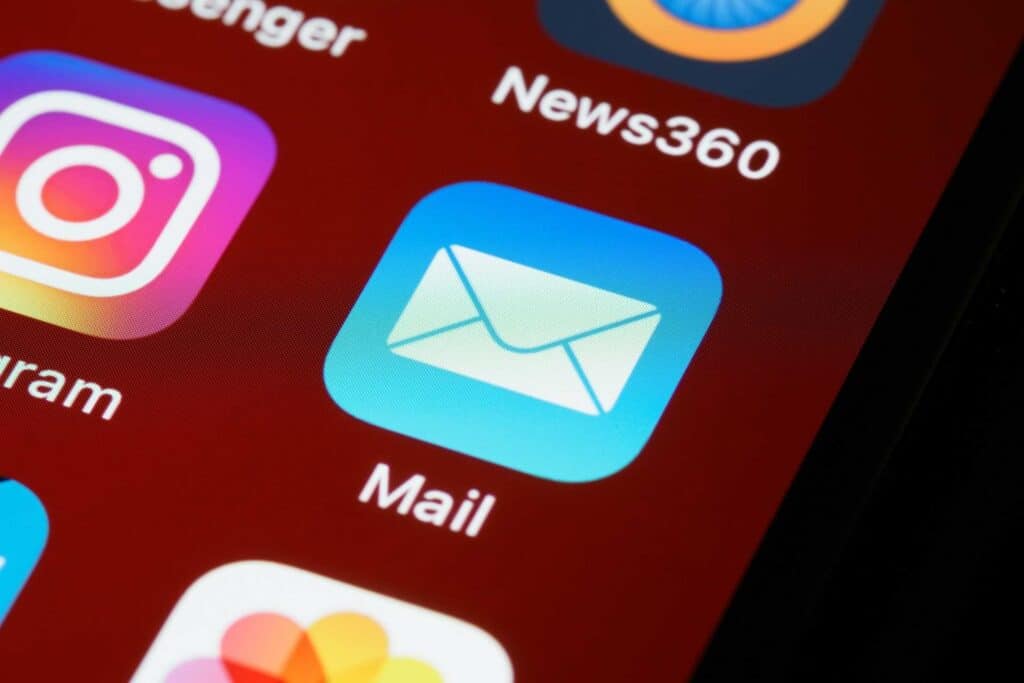Think your email marketing is fine? If people aren’t opening, think again.
Email remains one of the most powerful marketing tools, with an ROI that outperforms social media and paid ads. But none of that matters if your emails aren’t getting opened, read, or clicked.
Low engagement doesn’t just mean poor open rates – it means lost revenue, wasted effort, and missed opportunities to connect with your audience. So why is this happening?
Chances are, you’re making one (or more) of the common mistakes that drive subscribers to ignore, delete, or even unsubscribe from your emails. This post will explain why your email marketing isn’t working and, more importantly, how to fix it.
1. Your Subject Lines Aren’t Compelling
Your subject line is the first (and sometimes only) chance to capture attention. If it doesn’t stand out in a crowded inbox, your email won’t even get opened – let alone read.
Common Mistakes That Kill Open Rates
Many marketers fail because their subject lines are:
- Too generic: “Monthly Newsletter” doesn’t excite anyone.
- Too long: If it gets cut off on mobile, your message is lost.
- Clickbait-y: If your subject line overpromises and underdelivers, trust is broken.
- Unclear: If readers can’t immediately tell what’s in it for them, they’ll ignore it.
How to Write Better Subject Lines
Want more opens? Try these strategies:
- Keep it short and punchy – Aim for 6-10 words.
- Personalize when possible – “John here’s a deal just for you!”
- Use curiosity or urgency – “You’re missing out on something big…”
- Focus on value – “How to double your sales with one email tweak”
Your subject line is like a movie trailer for your email – make it compelling enough that people want to see more.
2. Your Emails Are Landing in Spam or Promotions Tabs
You crafted the perfect email, but it never reached your audience’s inbox—what went wrong? Spam filters and email algorithms automatically sort messages based on content, sender reputation, and engagement. If your email looks suspicious, it may end up in the spam or promotions tab, drastically reducing visibility.
Common Triggers That Get Your Emails Filtered
- Too many links or images – Spam filters flag emails overloaded with links or heavy visuals.
- Excessive sales language – Words like “FREE!!!” or “LIMITED TIME OFFER” can trigger spam detection.
- Misleading subject lines – If your subject line is deceptive, your email will likely be marked as spam.
How to Stay Out of Spam & Promotions Tabs
- Authenticate your emails – Set up SPF, DKIM, and DMARC records to prove you’re a legitimate sender.
- Clean your email list – Remove inactive subscribers to improve deliverability.
- Avoid spammy words – Keep your language natural and avoid all-caps or excessive punctuation.
Following these steps will improve your chances of landing in the primary inbox—where your emails actually get seen.
3. Your Content Isn’t Relevant or Valuable
If your emails feel generic or irrelevant, your audience won’t bother opening them – let alone engaging with them. Today’s consumers expect personalized, value-driven content tailored to their interests. If your emails don’t provide that, they’ll be ignored or deleted.
Why Generic Content Fails
It feels impersonal – A mass email with no personalization gets overlooked.
It doesn’t address the recipient’s needs—if your email isn’t relevant to their interests, it won’t resonate.
It lacks clear value. If people don’t see a benefit to opening your email, they won’t.
How to Make Your Emails More Engaging
Segment your audience – Group subscribers based on behavior, interests, or demographics to send targeted messages.
Use dynamic content – Personalize emails with names, past purchases, or tailored recommendations.
Focus on value – Instead of just selling, provide valuable tips, exclusive offers, or insightful content.
The more relevant and valuable your emails are, the more likely your audience will engage with them.
4. You’re Sending Emails at the Wrong Time or Too Frequently
When it comes to email marketing, timing is everything. You could craft the perfect email with an engaging subject line and valuable content, but it might get buried in an inbox or ignored entirely if you send it at the wrong moment.
There’s a delicate balance between sending too often and not enough. If you flood your audience’s inboxes, they’ll tune you out – or worse, unsubscribe. But if you don’t show up consistently, they’ll forget why they signed up in the first place. The key is to find that sweet spot where your emails feel like a welcome presence rather than a nuisance.
Unfortunately, there’s no universal “best time” that works for everyone. Your audience’s habits, time zones, and industry all play a role in when they’re most likely to engage. That’s why A/B testing is so valuable. By experimenting with different send times and tracking open and click-through rates, you can start to see patterns emerge – maybe your audience prefers emails on weekday mornings, or perhaps they engage more in the evenings when they have time to browse.
The best way to figure this out is to pay attention to the data. Monitor engagement trends, test different frequencies, and, most importantly, listen to your audience. When your emails arrive at just the right time—when your subscribers are most receptive—you’ll see a noticeable improvement in open rates and conversions.
5. Your Emails Aren’t Optimized for Mobile
Most People Check Emails on Their Phones
If your emails aren’t mobile-friendly, you alienate a huge portion of your audience. Most people check their emails on their phones, often in quick, casual moments – waiting in line, commuting, or taking a break. If your email is hard to read or interact with on a small screen, they won’t bother engaging with it.
What Makes Emails Hard to Read on Mobile?
A poor mobile experience can ruin engagement. Some common design mistakes include:
- Unreadable fonts – Tiny text forces users to zoom in, making them more likely to give up.
- Broken layouts—If your email doesn’t properly adjust to different screen sizes, it can look messy or cut off important content.
- Unclickable buttons – Small or improperly placed CTAs make it frustrating for users to take action.
How to Make Your Emails Mobile-Friendly
A mobile-optimized email is easy to read, navigate, and interact with. Here’s how to make that happen:
Use responsive design – Ensure your email automatically adjusts to different screen sizes.
Keep paragraphs short. Dense text is hard to skim on mobile, so break up content for readability.
To make CTAs stand out, Use large, tappable buttons that are easy to click with a thumb.
A well-designed mobile email ensures your message is seen, read, and acted upon rather than ignored or deleted.
6. Your Call-to-Action (CTA) Is Weak or Confusing
A Weak CTA Means Lost Opportunities
Your call-to-action (CTA) is the moment of truth – the part where you tell your audience what to do next. But people won’t take action if your CTA is vague, buried in the email, or competing with too many other choices. A weak CTA means lost clicks, lost leads, and, ultimately, lost revenue.
What Makes a CTA Ineffective?
The most common mistakes include:
- Vague wording: Phrases like “Click here” or “Learn more” do not tell the reader what they’re actually getting.
- Too many CTAs – Giving multiple options (“Buy now!”, “Sign up today!”, “Read this blog!”) can overwhelm the reader and lead to decision fatigue.
- Lack of visibility – People will miss it if your CTA blends into the background or is hidden at the bottom of a long email.
How to Create a Strong, Actionable CTA
A great CTA is clear, compelling, and easy to act on. Instead of vague prompts, make your CTA specific:
Instead of “Get Started,” try “Start Your Free Trial.”
Instead of “Learn More,” try “See How It Works”
Placement and design matter, too. CTAs should be visually distinct – using buttons instead of plain text can increase clicks. And if you’re unsure which style works best, A/B testing different CTA formats, colors, and wording can help you find what resonates most with your audience.
When your CTA is clear and enticing, people won’t hesitate to take the next step.
7. You’re Not Monitoring and Adjusting Your Strategy
If You’re Not Tracking Performance, You’re Guessing
Email marketing isn’t a set-it-and-forget-it strategy. If you’re not actively monitoring how your campaigns perform, you have no way of knowing what’s working and what’s falling flat. Ignoring your analytics means you’re essentially guessing – and guessing won’t get results.
Why Tracking Metrics Matters
Your open rates, click-through rates, and conversions tell you how engaged your audience is. If open rates are low, your subject lines might need tweaking. If people open your emails but don’t click through, your content or CTAs might not be compelling enough. And if conversions aren’t happening, it’s time to rethink your offers or targeting.
A/B Testing: Your Best Friend in Email Optimization
One of the most effective ways to refine your email strategy is A/B testing. By testing different subject lines, content styles, send times, or CTA placements, you can gather accurate data on what resonates most with your audience. Even minor tweaks like adjusting the wording of a CTA or changing the time an email is sent – can significantly improve engagement.
Use Data to Improve Continuously
Every email campaign gives you insights. The more you analyze and adjust, the better your results will be. Pay attention to what your audience responds to, and let the data guide your strategy. That way, instead of sending emails into the void and hoping for the best, you’ll make informed decisions that drive real engagement and conversions.
Take a Step Back and Audit Your Email Marketing Strategy
If your email campaigns aren’t getting the engagement you want, don’t just keep sending and hoping for better results – take a step back and analyze what’s going wrong. Are your subject lines compelling? Is your content relevant? Are your emails optimized for mobile? Identifying weak spots is the first step toward improving your strategy.
The good news is that you don’t have to overhaul everything at once. Try implementing just one fix today. Maybe that means testing a new subject line, tweaking your CTA, or adjusting your send time. Track the results, see what changes, and refine from there.
Email marketing is all about continuous improvement. The more you test, adjust, and optimize, the better your emails will perform – and the more valuable they’ll be to your audience.


